In a world of increasing complexity and constant change, organizations are realizing the need to transform the way they work. Agile methodologies have emerged as the gold standard for modern project management, enabling businesses to navigate uncertainty, improve efficiency, and drive innovation. Nowhere is this transformation more critical than in healthcare, where patient care, compliance, and technological advancements demand continuous improvement.
While Agile was born in the software industry, its principles have found profound success in healthcare project management, allowing hospitals, insurance providers, and healthcare IT teams to streamline operations, improve patient outcomes, and accelerate digital transformation. From enhancing electronic health records (EHRs) to optimizing patient workflows, Agile empowers healthcare organizations to pivot quickly, adapt to regulatory changes, and deliver higher-quality care.
This in-depth exploration of the Agile Delivery Life Cycle provides a roadmap for organizations looking to integrate Agile methodologies into their operations—with a particular focus on the unique challenges and opportunities in healthcare.
The Agile Delivery Life Cycle: A Continuous Evolution
Agile is not just about completing projects—it’s about delivering ongoing value in a way that is responsive, collaborative, and customer-centric. The Agile Delivery Life Cycle provides a structured approach that ensures teams can adapt quickly to changes, optimize workflows, and continuously improve their processes.
For healthcare organizations, delivering the right solution at the right time can mean the difference between life and death. The traditional Waterfall model, with its rigid planning and long development cycles, often fails to accommodate the fast-paced and unpredictable nature of healthcare operations. Agile, by contrast, embraces iterative development, continuous feedback, and a focus on real-world needs.
Understanding User Needs: The Foundation of Agile in Healthcare
Every Agile journey begins with understanding the people it serves. In healthcare, this means patients, doctors, nurses, administrators, and regulators. The success of any digital health initiative—whether it’s an EHR system upgrade, a telemedicine platform, or a hospital workflow optimization project—depends on how well it meets the needs of its users.
User Story Mapping: A Patient-Centered Approach
Rather than designing a system based on abstract requirements, User Story Mapping ensures that teams build solutions that truly address user pain points.
Consider the development of a new patient appointment scheduling system. A traditional approach might define system requirements upfront, leading to a rigid, one-size-fits-all product that doesn’t accommodate the unique workflows of different healthcare providers. With User Story Mapping, teams collaborate directly with users—from front desk staff to physicians—to understand their challenges, map out their workflows, and build a system that truly enhances efficiency and accessibility.
Example in Healthcare:
A hospital transitioning to a digitized patient record system started with user story mapping. By involving doctors, nurses, and administrative staff, they uncovered critical workflow bottlenecks—such as delays in accessing test results—that traditional software planning had overlooked. By iteratively refining the system, they cut patient wait times by 30%, leading to faster diagnoses and better care.
Backlog Refinement: Prioritizing What Matters Most
In Agile, the product backlog serves as a living document, continuously updated and refined based on emerging priorities and real-world feedback.
For healthcare IT projects, this is crucial. Regulatory changes, compliance updates (such as HIPAA requirements), and shifting patient care needs mean that a project planned months in advance may no longer align with reality. Agile ensures that teams remain adaptable, always working on the highest-priority tasks.
Example in Healthcare:
A medical research institution developing an AI-powered diagnostic tool needed to adjust their backlog frequently as new FDA regulations and clinical trial data emerged. Agile backlog refinement enabled them to rapidly reprioritize features, ensuring that they stayed compliant while continuing to deliver an innovative solution to physicians.
Sprint Planning: Aligning Goals with Measurable Impact
At the heart of Agile is the Sprint, a time-boxed iteration (typically 1-4 weeks) in which teams focus on delivering a set of high-priority features or improvements.
For healthcare teams, Sprint Planning ensures that the most impactful work gets done first. Instead of attempting to overhaul an entire system at once, small, incremental improvements are delivered—each providing measurable value.
Example in Healthcare:
A hospital IT team working on an EHR upgrade structured their work into two-week sprints, tackling critical improvements in patient data retrieval first. By doing so, they reduced medication errors by 20% in the first few sprints alone, leading to safer patient care.
Daily Stand-Ups: Breaking Silos in Healthcare
Agile promotes continuous communication through daily stand-up meetings, where teams discuss progress, challenges, and next steps.
In healthcare, communication silos can lead to delayed treatments, misaligned priorities, and medical errors. Daily stand-ups create a culture of proactive collaboration, where teams stay aligned and roadblocks are addressed in real time.
Example in Healthcare:
A telemedicine provider struggling with patient onboarding delays introduced daily stand-ups involving engineers, support teams, and clinical liaisons. Within a month, they reduced onboarding time from 5 days to 48 hours, dramatically improving patient access to care.
Sprint Execution: Delivering Value in Iterations
Agile breaks work into manageable pieces, delivering usable increments that allow for real-time feedback and adjustments.
In healthcare, small improvements can make a big difference. Whether it’s refining a patient portal interface, improving appointment scheduling workflows, or automating claims processing, incremental changes lead to faster adoption and better outcomes.
Example in Healthcare:
A pharmaceutical company implementing an Agile approach to clinical trial management used sprint-based execution to roll out automated patient monitoring in phases. By addressing real-time issues as they arose, they reduced trial data processing errors by 35%, accelerating FDA approval timelines.
Sprint Review: Learning from Real-World Use
Unlike traditional project management approaches that wait until the end of a project for evaluation, Agile incorporates feedback throughout development.
For healthcare providers, this ensures that solutions are tested in real-world conditions and refined based on direct user input. A Sprint Review involves presenting completed work to stakeholders, gathering feedback, and planning improvements.
Example in Healthcare:
A home healthcare service introduced an AI-powered symptom tracker for elderly patients. After each sprint, they gathered feedback from caregivers and patients, making refinements that increased patient engagement by 50%.
Sprint Retrospective: Continuous Improvement as a Standard Practice
At the end of each sprint, teams conduct a Sprint Retrospective, reflecting on what went well, what could improve, and how to enhance future iterations.
In healthcare, where lives depend on efficiency, accuracy, and responsiveness, a culture of continuous improvement is critical. Agile ensures that every sprint builds on past learnings, leading to an organization that is constantly refining and optimizing its workflows.
Example in Healthcare:
A hospital emergency department implemented Agile retrospectives to analyze patient throughput. By continuously refining triage workflows, they cut ER wait times by 40%, significantly improving patient care and satisfaction.
Agile transformation is not just about process changes—it’s about creating a culture of agility. This means fostering collaboration, adaptability, empowerment, transparency, and resilience.
In healthcare, this cultural shift is particularly impactful. When doctors, nurses, IT teams, and administrators work together in an Agile manner, the result is faster response times, improved patient experiences, and a system that can adapt to new challenges.
As the healthcare industry continues to evolve, Agile is becoming an essential tool for managing complexity, accelerating innovation, and delivering higher-value patient care. Whether it’s implementing AI-driven diagnostics, optimizing electronic records, or developing new telehealth solutions, Agile ensures that healthcare organizations can stay ahead of change rather than reacting to it.
Agile is not just for software teams—it’s for any organization that wants to thrive in an unpredictable world. By embracing the Agile Delivery Life Cycle, healthcare providers can reduce inefficiencies, enhance collaboration, and ultimately, improve patient outcomes.
At Apstax Solutions, we help organizations navigate Agile transformation with expert coaching, customized roadmaps, and real-world implementation strategies. Ready to transform your approach? Let’s get started. 





